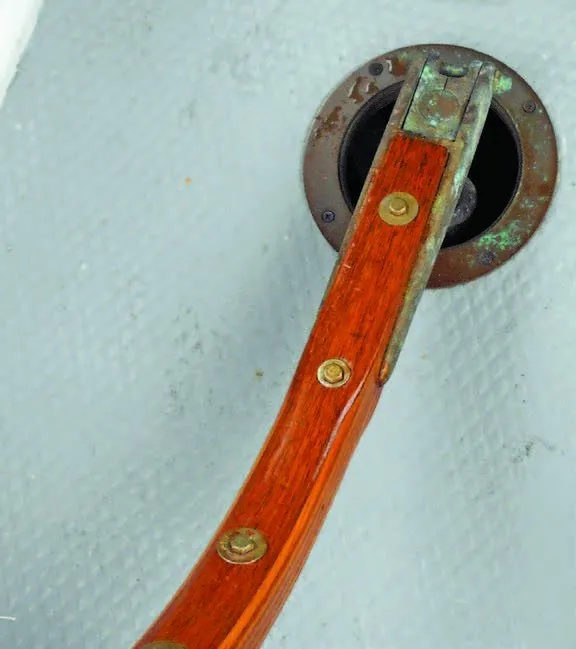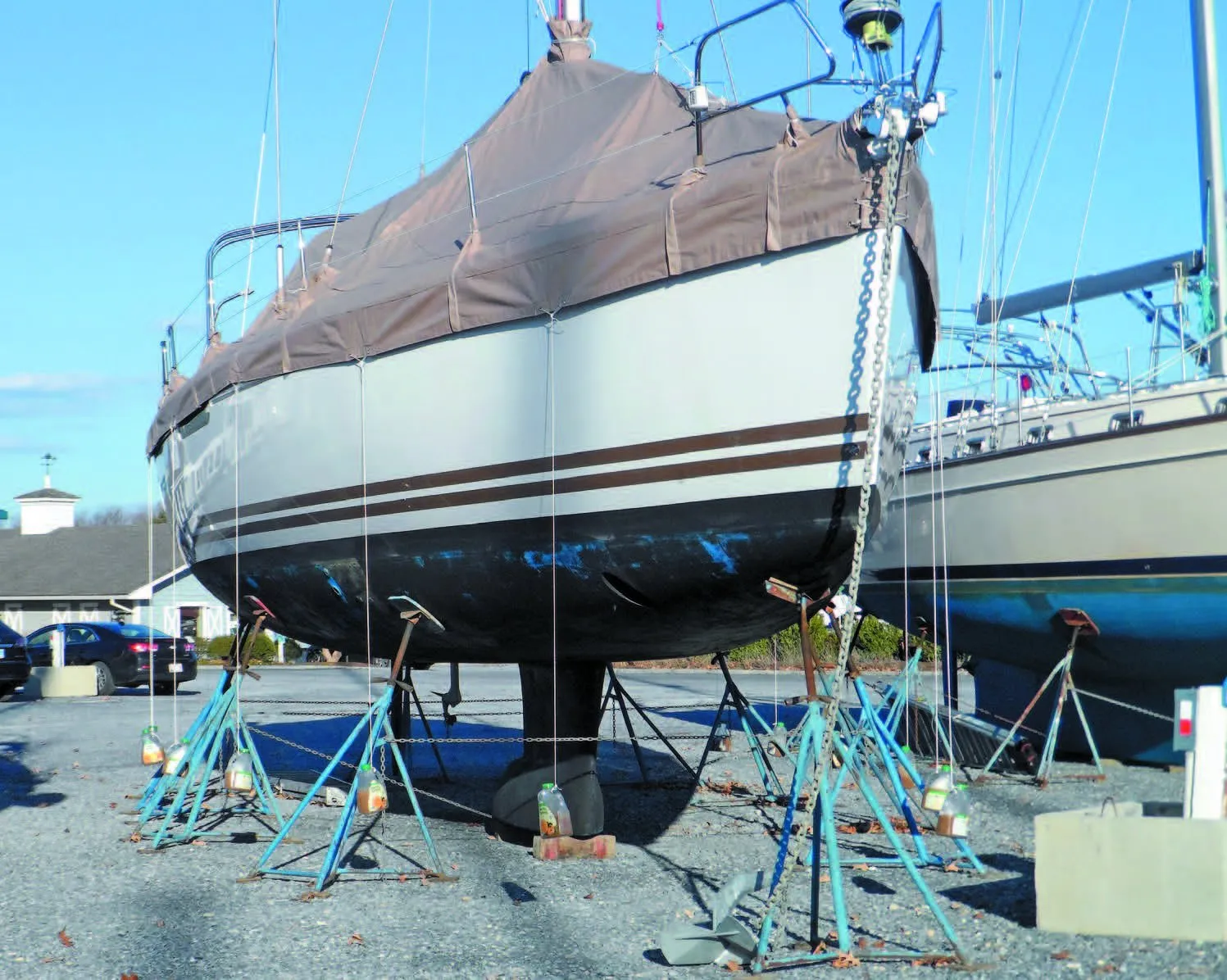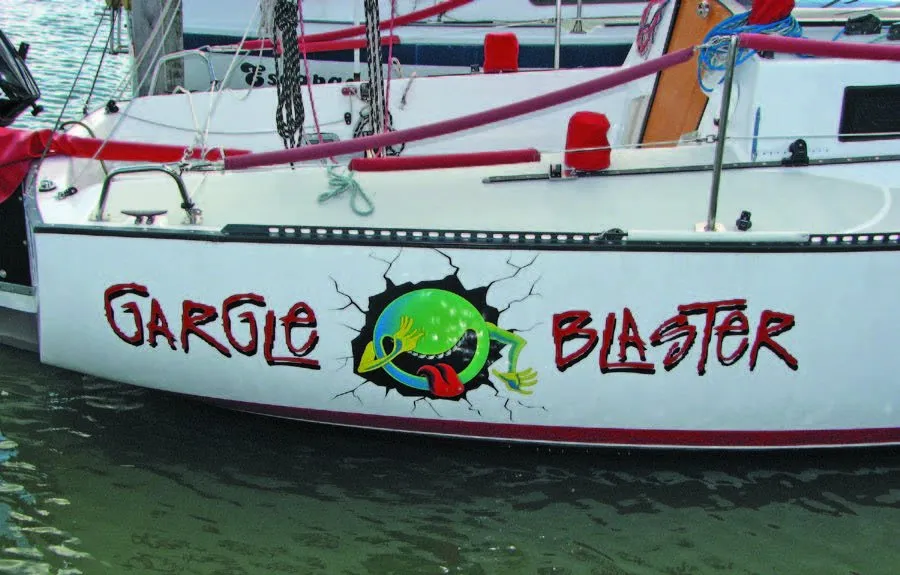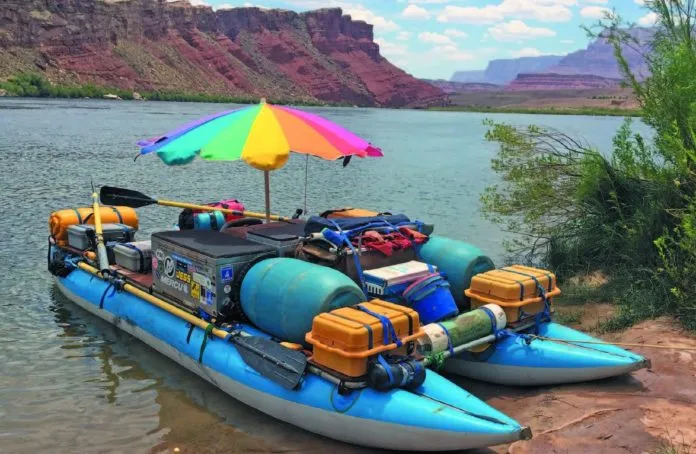Regarding your recent Inside Practical Sailor blog post Drysuits vs. Survival Suits, I raft the Colorado river in Grand Canyon where water temps are around 50 F, even in the summer. The whitewater down there is furious and sometimes dangerous. I wear a 3 millimeter neoprene wetsuit under a full drysuit. If the drysuit rips, the wetsuit should slow down thermal loss. The problem is heat buildup in the sun. The solution is to jump in the cold water now and then to keep from over heating. On a sailboat that would be harder to do. There have been a few times sailing solo when I wore both garments, but it was pretty clammy inside. There is no perfect solution, just reasonable compromises by which to stay alive. Something to remember is that once a drysuit rips, it will take on hundreds of pounds of water. A high flotation PFD is mandatory, at least 26 pounds I would think.
Bruce McElya
MacGregor 26 (formerly)
Colorado River
Emergency Steering
Your editors letter in December 2018 issue mentioning steering failure off Bequia reminds me of our own steering loss off Saba in our S&S-designed Stevens 47. The incident taught us an important lesson applicable to many boats. The stainless steel rudderstock broke, the break invisible inside the fiberglass rudder tube.

Crevice corrosion presumably was the culprit. (The break was not diagnosed correctly until the boat was hauled and the rudder removed, the initial suspicion being failure of the weld holding the rudders internal steel web to the stock.)
What saved the day was that the top, aft corner of the rudder had a small hole through it, which fortunately I remembered but until then had not thought much about. The builder, Queen Long of Taiwan, may have made that hole standard on that class of boat. The aft, upper corner of the skeg-hung rudder was above the designed waterline and only a few inches forward of the lower edge of the reverse transom. Fortuitously, we had long lightweight spinnaker sheets thin enough to go through the hole. With some difficulty in 6-foot seas I was able to keep my feet on the transom and be supported by a line from my inflatable vest safety harness to a winch.
I reached beneath me and the transoms lower edge to thread the line through the hole. Knots on each side of the rudder in the middle of the line kept the line from moving back and forth through the hole. We then led the ends of the spinnaker sheet forward from the rudder along each side, up the topsides, and across the rail to the primary winches.
For eighteen hours we steered with that line as one would steer a horse with reins. Partway through the day we changed to the other spinnaker sheet as chafe became a worry. We arrived back off St. John, Virgin Islands, in strong winds and pitch dark. Two outboard-powered inflatables met us off the entrance to Great Cruz Bay, and like little tug boats they helped get us through the moored boats to our own mooring. For rudders where one could conceivably reach the upper aft corner as I did, or in smoother seas access by swimming, a hole in that corner is worth considering.
When the rudder was dropped, it was discovered that a couple of inches below the break and unrelated to the break was a weld, still in perfect condition, indicating that when the boat was built, Queen Long welded together two pieces to make the rudder stock long enough. Talking to top-of-the-line boatbuilder friends here in Maine, I found them appalled, although clearly the welder who joined the pieces was very skilled. Queen Long had the reputation of being the second best yard in Taiwan at the time, but I saw enough and heard enough never to fully trust Taiwan-built boats – too much tendency to make a buck by cutting corners. You may know that the Stevens 47 was the first design that Sparkman & Stephens permitted to be built in Taiwan.
Ben Emory
Finngulf 391 West Wind
Salisbury Cove, Maine.
Steering Tales
Our pull-pull cable system failed in a gale when one of the roller chain links, not an end link, broke. This chain is rated for 6900 lbs. breaking and 1500 lbs. working strength (ANSI #50). Usually, our wheel steering is quite easy to use and requires minimal effort on the part of the helmsman, even in a storm. Imagine our surprise when we fitted the nearly 40-inch long emergency tiller and experienced the extreme effort needed to steer the boat.

The emergency tillers on some boats are much shorter and are located in very awkward positions. Before you need to use your emergency tiller, try it out, you may be surprised as well; rigging relieving tackle is not out of the question.
Inspecting the chain and the chain to cable connections on our pedestal steering unit is nearly impossible without first dismantling the pedestal and removing the chain and cable.
Another concern with an emergency tiller setup is the size of the hole in the cockpit sole for fitting the tiller; a five inch deck plate on our boat. This is a large hole and, if the cockpit is pooped, can allow considerable water to drain into the bilge.
John; Brenda Gross
Shannon 38,
Houston, TX
Faircloth Still Works
Thank you for a very informative and timely blog on making a winter cover. I still use Faircloth. Erecting a frame with ribs made of transversal electrical metal tubing, I use dozens of zip cable ties to secure it to the stanchions. I am perplexed at what to use for the longitudinal spines. Up to this year, 16-foot-long 1 X 2 furring strips created the skeleton. Would anyone have a better idea?

Robert Coles
via PS Online
In our do-it-yourself winter frame (https://goo.gl/33SWLN) there is only one longitudinal spine at the top. Furring strips-perhaps drilled to stay fixed-would work, as would PVC plumbing. The latter would be more expensive- and more plastic.
Plastic Repair
As a plastics engineer (yes that is a real degree) with almost 40 years experience, there are certain truths. One is: Like Likes Like. This means that you must use similar materials if you have hopes of them adhering to one another. Yes there is mechanical adhesion, but you would prefer to have both mechanical and chemical adhesion. Before you start the repair, find out from the manufacturer what the tank is made of. Polyethylene and polypropylene are the hardest to adhere to so you may want to flame treat the surface first (Google will explain). Having struggled with the science of adhesion my whole career, I reiterate the advice you gave to readers in your recent article on plastic tank repair (PS December 2018): practice first!
Andy Schoenberg
1973 Pearson 30
Casco Bay, Maine
Flight Correction
Your November editorial described a famous flight accident in which, The cockpit crew had neglected to put the elevators in the take-off position. If I am remembering this correctly, they forgot to remove the external locks that keep the elevators from flopping around when the plane is not in use. That is why air crews routinely exercise all controls through a full range of motion before take-off. The cause was poorly described here by PS.

Harrison Pratt
S2 7.9 Gargle Blaster
Sandusky, OH
Good catch, had we not indulged in one-to-many Pan Galactic Gargle Blasters (or the earthly equivalent) when we were younger, we would have had the sense to run that editorial past one of the knowledgeable editors at our sister publication Aviation Consumer, aimed at small-plane pilots.


































